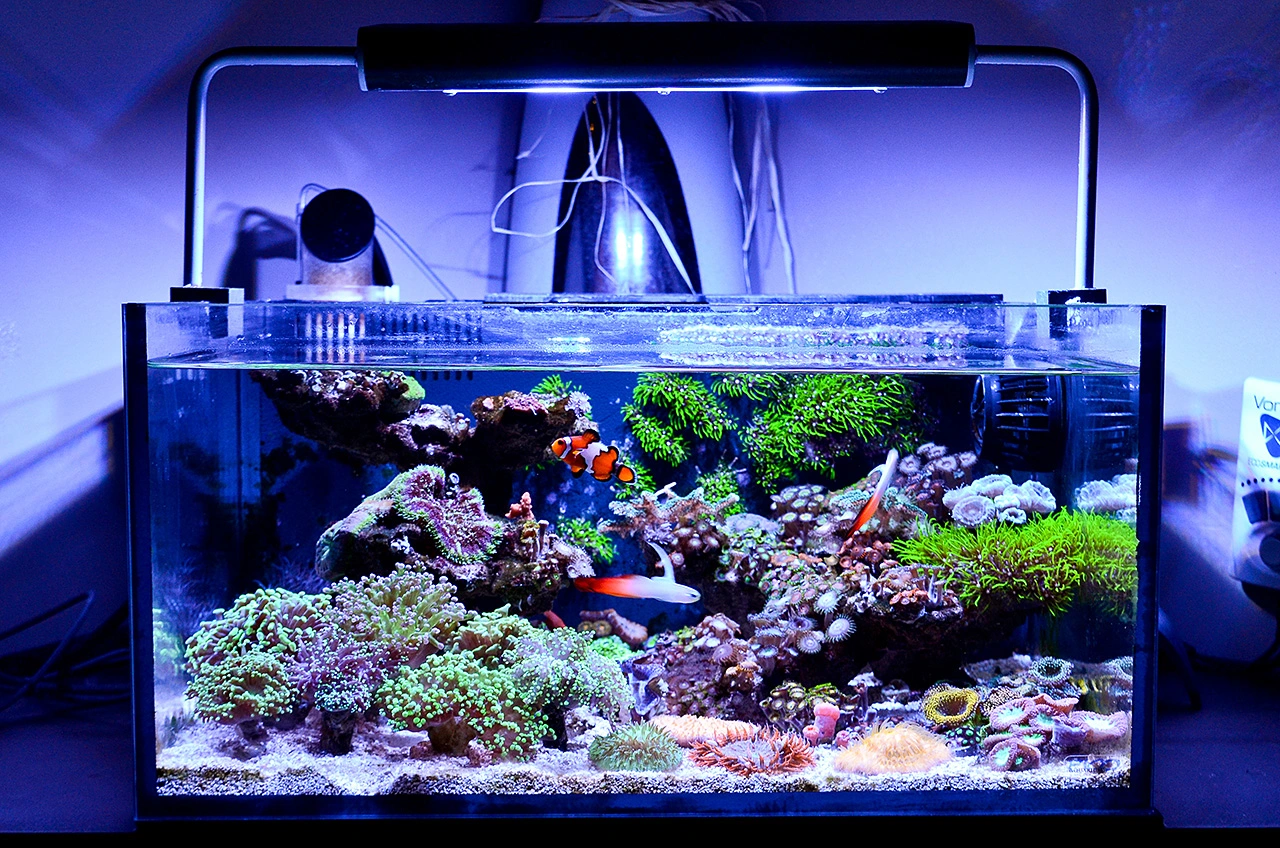Stunning 12-Gallon Reef Tank – ninjamyst's TOTM | NanoReef

Tank Specifications
Volume: 12 Gallons / 47 Liters
Dimensions (L × W × H):
18.0" ×
18.0" ×
9.0"
45.7cm ×
45.7cm ×
22.9cm
Equipment List
- Salt: Seachem
Frequently Asked Questions
How often should I perform water changes on my reef tank?
It is recommended to perform water changes weekly, about 30% of the total volume to maintain water quality and reduce nutrient levels, especially if your tank is heavily stocked.
What should I do to keep detritus from building up in my reef tank?
To prevent detritus build-up, blow detritus off the rocks daily and stir the sandbed regularly. Additionally, vacuum the sandbed during water changes to remove build-up.
What equipment should I use for proper nutrient export in my tank?
Use a reliable skimmer like the PicO Skimmer 2.0, perform regular water changes, and consider using media such as Seachem Matrix Carbon and Phosguard for efficient nutrient export.
What are the ideal water parameters for a mixed reef aquarium?
The ideal parameters to maintain in a mixed reef aquarium include: Salinity of around 1.025, Temperature of 78°F, Alkalinity at about 8.0 dKH, Calcium around 450 ppm, and Magnesium at 1300 ppm.
How can I stabilize my water parameters?
To stabilize water parameters, keep a consistent maintenance routine, test water regularly, and adjust dosing based on test results. For instance, if your alkalinity drops, consider daily dosing of Seachem Fusion Part II.
What type of food should I use for feeding my reef tank?
A good feeding routine includes high-quality foods like LRS Reef Frenzy Nano every other day and a mix of BRS Reef Chili and PhytoPlan on alternate days. This promotes growth and coloration in your fish and corals.
How often should I dose supplements in my reef tank?
Daily dosing is recommended for supplements like Seachem Fusion Part II, especially if your alkalinity consistently drops.
What should I consider when aquascaping my reef aquarium?
When aquascaping, consider using dry rock for stability and pest-prevention, and leave enough space for coral growth. Ensure adequate water flow by leaving open spaces for water circulation.
How do I prevent overstocking in my reef tank?
To avoid overstocking, research the adult size and compatibility of fish before adding them. Start with a few hardy species, monitor the tank's stability, and add new inhabitants slowly.
How can I ensure the health of my corals?
Maintain stable water parameters, provide adequate lighting, and ensure proper flow rates in the tank. Feed corals appropriately and monitor for signs of pests or disease.
What factors should I consider for coral compatibility?
Consider the light and flow requirements, as well as the aggressiveness of different coral species. Research compatibility to prevent conflicts between corals that can stifle growth or damage.
How can I take better photographs of my reef tank?
To improve your aquarium photography, ensure proper white balance to reduce blues, turn off pumps to minimize blurriness, and shoot perpendicular to your subject. A fast shutter speed will also help in capturing clear images.
Do I need a DSLR to get good photos of my tank?
No, you don't necessarily need an expensive DSLR; many stunning images can be captured using smartphones or point-and-shoot cameras with good technique.